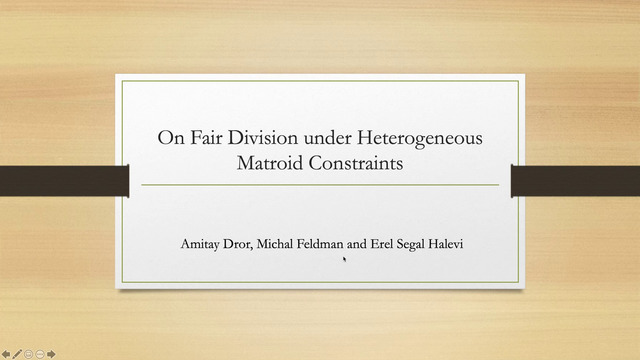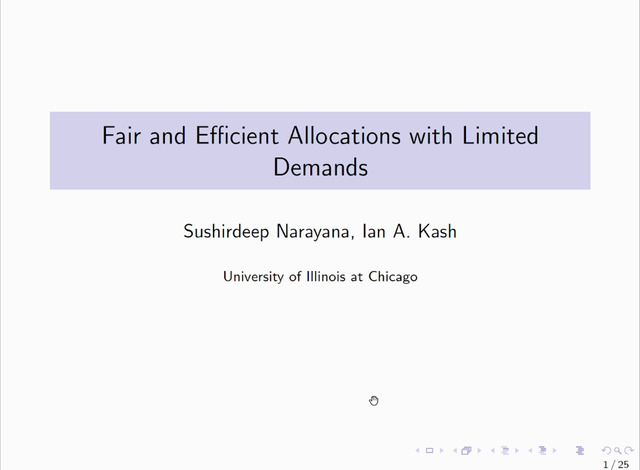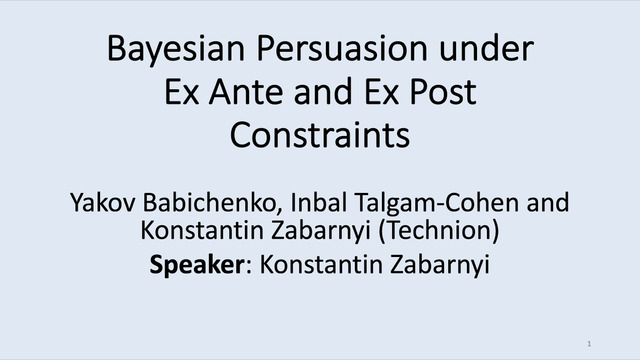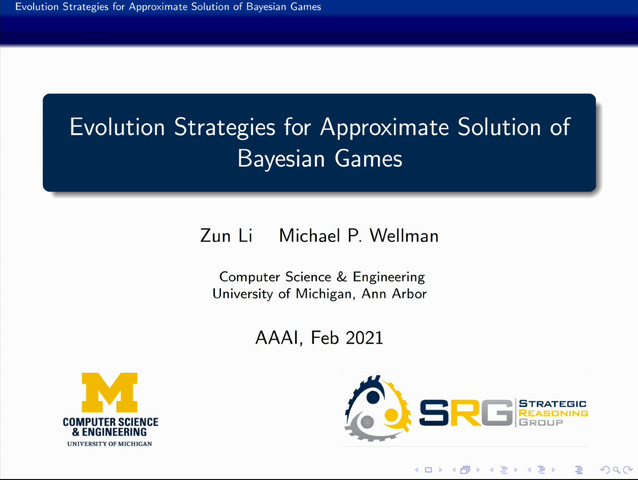Abstract:
We consider a natural extension to the metric uncapacitated Facility Location Problem (FLP) in which requests ask for different commodities out of a finite set (S) of commodities. Ravi and Sinha (SODA 2004) introduced the model as the Multi-Commodity Facility Location Problem (MFLP) and considered it an offline optimization problem. The model itself is similar to the FLP: i.e., requests are located at points of a finite metric space and the task of an algorithm is to construct facilities and assign requests to facilities while minimizing the construction cost and the sum over all assignment distances. In addition, requests and facilities are heterogeneous; they request or offer multiple commodities out of S. A request has to be connected to a set of facilities jointly offering the commodities demanded by it. In comparison to the FLP, an algorithm has to decide not only if and where to place facilities, but also which commodities to offer at each. To the best of our knowledge we are the first to study the problem in its online variant in which requests, their positions and their commodities are not known beforehand but revealed over time. We present results regarding the competitive ratio. On the one hand, we show that heterogeneity influences the competitive ratio by developing a lower bound on the competitive ratio for any randomized online algorithm of (Ω( √|S| + log/n log log n)) that already holds for simple line metrics. Here, (n) is the number of requests. On the other side, we establish a deterministic (O(√|S| · log n))-competitive algorithm and a randomized (O(√|S| · log/n log log n))-competitive algorithm. Further, we show that when considering a more special class of cost functions for the construction cost of a facility, the competitive ratio decreases given by our deterministic algorithm depending on the function.









































